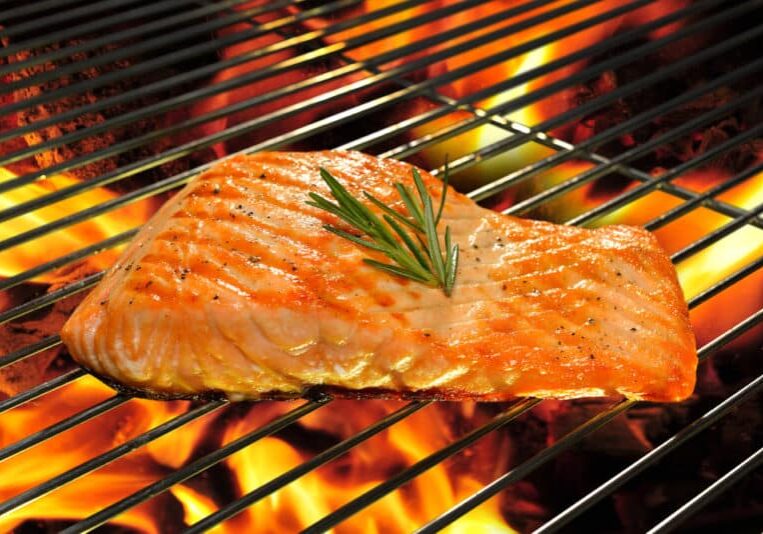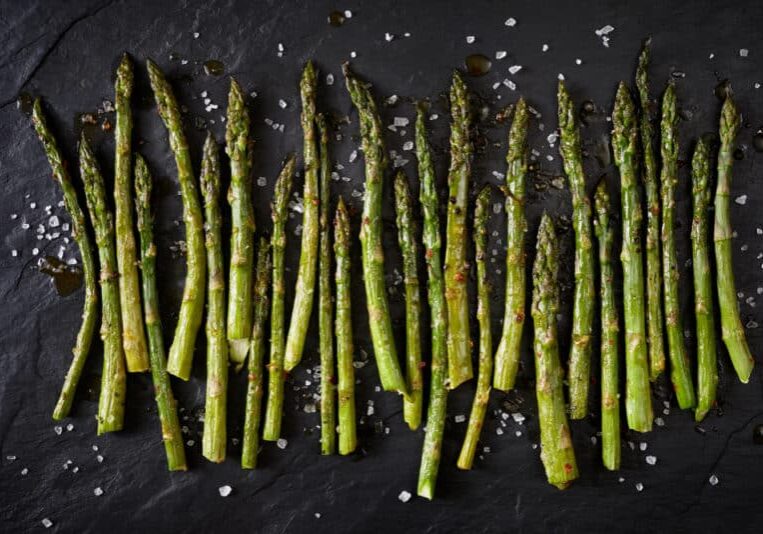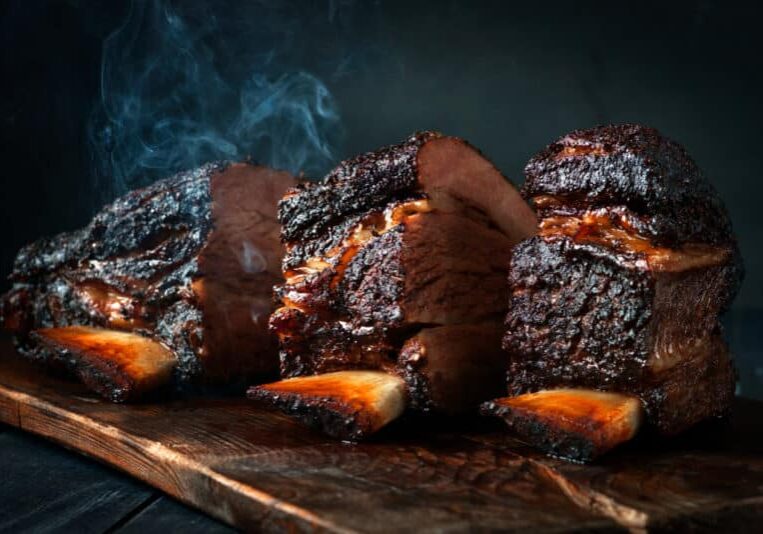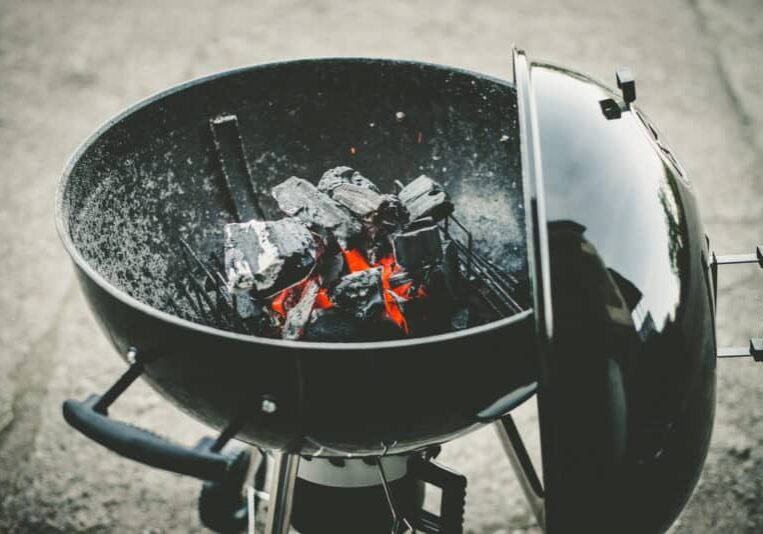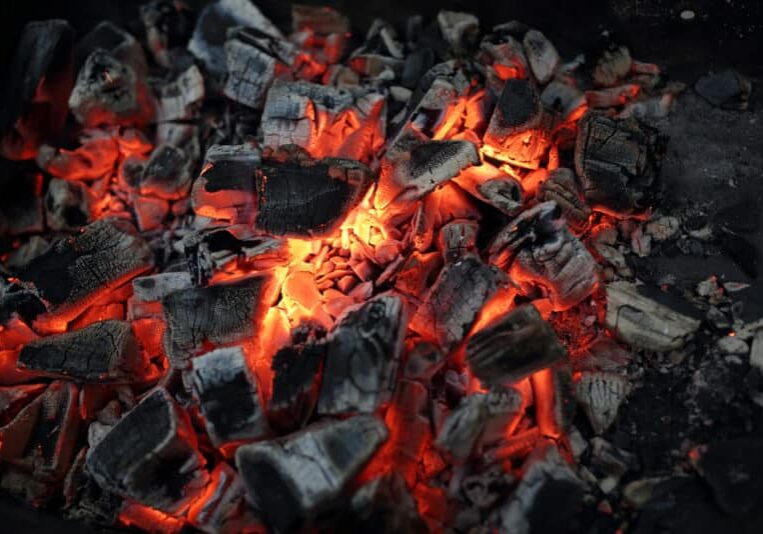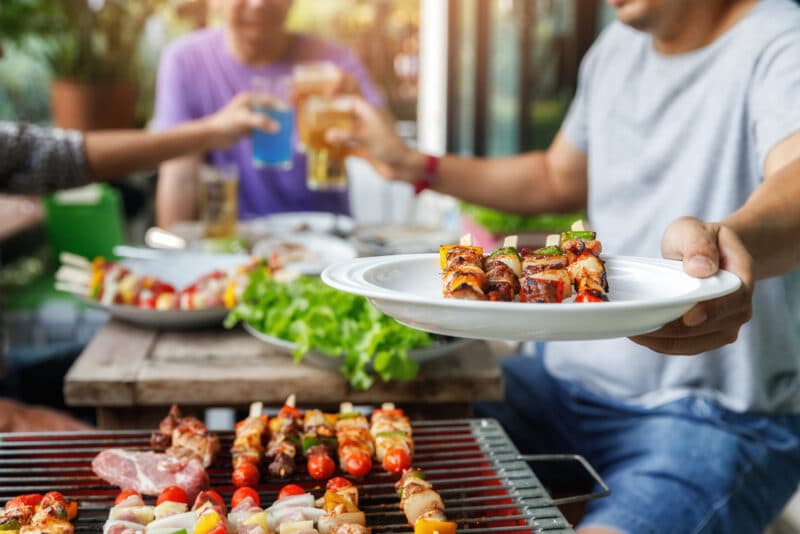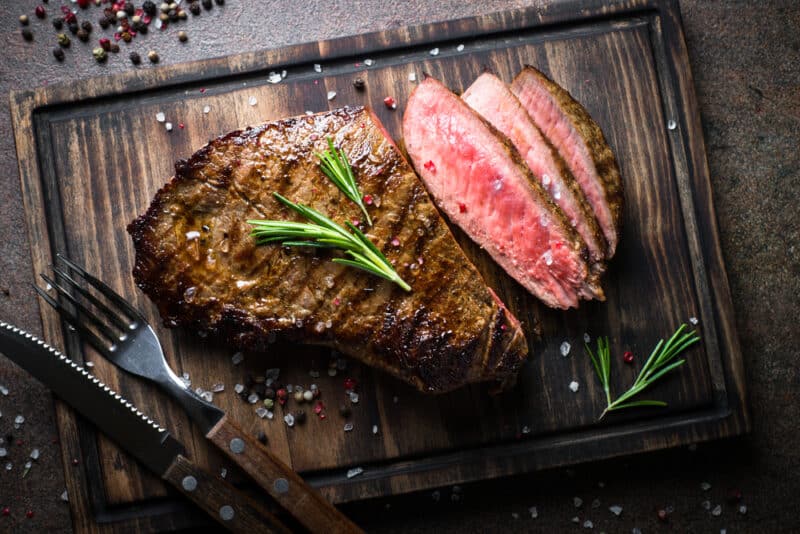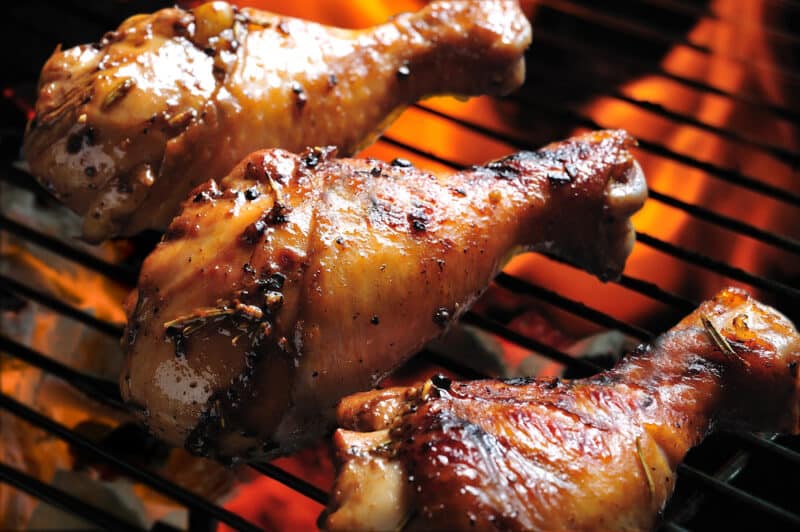How Long Does Prime Rib Last in the Fridge? (Quick Answer)
TheGrillingMaster.com is reader-supported. If you buy something using the links on our site, we might earn an affiliate commission at no added cost to you. This helps us pay our staff to keep making awesome content for you!
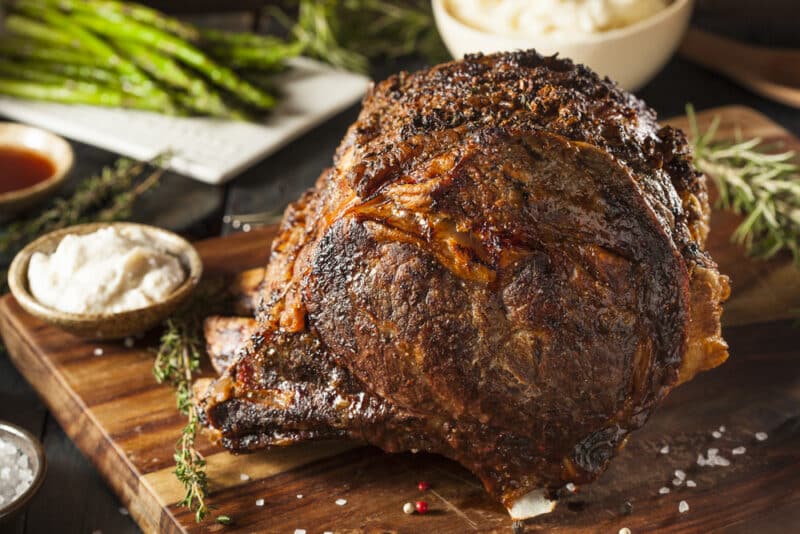
According to the USDA, uncooked prime rib lasts for about 3 to 5 days in the fridge if it is stored below 40°F. A standing rib roast is a classic centerpiece on the dinner table.
But how long can you store this cut of beef in the fridge, both raw and cooked? It’s important to know the shelf life of your prime rib so that you can ensure it’s safe to eat and still enjoy that juicy, delicious, fall-off-the-bone flavor. A standing rib roast is a classic centerpiece on the dinner table.

If you want to keep your special prime beef cut in the fridge, you should keep it in an airtight container or wrap it tightly in plastic wrap or aluminum foil.
This’ll stop it from drying out or smelling like the other stuff in your fridge, and also for food safety.
You can store it like this for up to 5 days before you need to freeze it.
When you want to reheat it, use the oven at a lower temperature, so you don’t dry it out.
In this article, we’ll explore the storage time of raw and cooked prime rib, as well as other tips to keep your prime rib fresh.
What are the Risks of Keeping Prime Rib in the Fridge for Too Long?
If you keep prime rib in the fridge for too long, you’re risking food poisoning.
Germs like Salmonella, E. coli, and Listeria can still grow in the fridge and contaminate any cut of meat, just slower than at room temperature.
So, if you’ve had it in there for longer than the recommended number of days, there’s a chance it’s gotten contaminated.
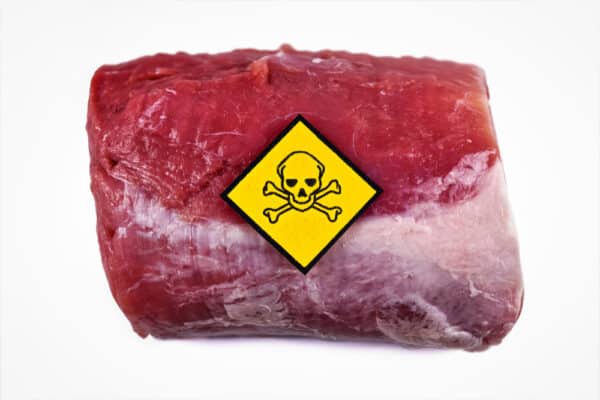
It’s important to follow food safety guidelines and not keep cooked or uncooked beef in the fridge for more than 3 to 5 days.
If your prime rib has been in the fridge for longer than that, it’s best to check it for signs of spoilage. If you suspect the meat is off, get rid of it to be safe and avoid food-related illnesses.
Furthermore, leaving raw beef on the counter is also dangerous. Sitting in the danger zone between 40 and 140°F for more than 2 hours allows the growth of dangerous bacteria.
Related Reading >> Can You Eat Raw Steak?
What Factors Affect Refrigerated Storage Time of Prime Rib?
Although the United States Department of Agriculture (USDA) recommends raw beef to be refrigerated for no longer than 5 days, there are ways to keep uncooked prime rib safely for longer.
This table shows a summary of safe storage options.
Prime Rib State |
Days |
Temperature |
|
3 to 5 |
3°F to 40°F |
|
10 to 14 |
Between 36 and 40°F |
|
3 months+ |
Between 34 and 38°F |
|
2 to 4 |
Below 40°F |
Raw Prime Rib – Not Vacuum Packed
The typical way raw meat is packaged when sold in supermarkets is on polystyrene trays, wrapped in a thin layer of plastic.
Most stores show sell-by dates, and many also show best-by dates. It is important to understand how these two dates differ.
Sell-By Date:
This date is typically for the store’s control to ensure they remove unsold fresh produce from the shelves after the sell-by date. It is also a good idea for you to ensure you don’t buy products still displayed after the sell-by date.

Best-By Date:
This date is the important one for you to look out for since you won’t know how long the meat sat on the store’s shelf. Keeping in mind that the USDA recommends keeping raw meat for only 3 to 5 days, the best-by date should tell you how long after the purchase you can keep it refrigerated and still be in the safe zone.
Related reading: See how much prime rib you need per person.
Aging a Prime Rib
However, aging the meat would allow you to keep a raw prime rib for weeks or even months in your fridge without safety risks. As long as you do it correctly. There are two aging processes:
1. Wet-Aging
- If you intend to use your prime rib within the next couple of weeks, the wet-age method is the way to go.
- Make sure the packaging is thick and vacuum-sealed to keep air out and prevent bacterial growth.
- Steer clear if it was wrapped in plastic wrap and on a Styrofoam tray – that’s not safe.
- Just put the sealed package in the fridge, making sure the temperature is between 36 and 40°F. If it is too low, the meat will freeze.
- Turn the vacuum-packed beef over every 2 or 3 days to ensure even aging.
If you follow these guidelines, you’ll be good to go for 10 to 14 days!
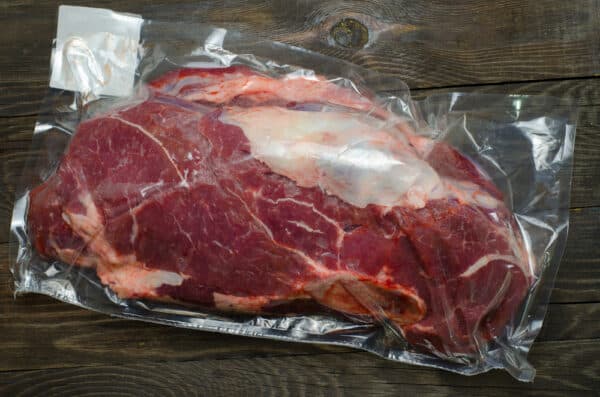
2. Dry-Aging
Dry aging meat at home is different from doing it in a commercial setup where raw meat hangs in walk-in fridges to ripen over time.
Here’s how you can dry age your prime rib at home and still keep it safe to eat for an extended period of time:
Storing your prime rib using the dry-age method can keep it fresh and safe for up to 3 months, although it does need some prep work and a bit of attention. It’s the best way to go if you need it to last that long in the fridge.
You need to realize that using this method of storage will alter the taste of the prime rib.
Aged beef will still stay good in the fridge, but it won’t be the same as when it’s freshly bought.
People usually say it is the best prime rib because it has a more intense or beefier flavor, but it all comes down to your individual preference.
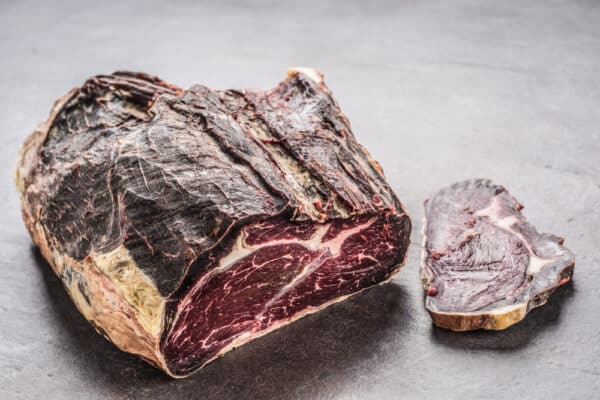
Here’s how to dry age your prime rib:
- Get a roasting pan or baking sheet with a rim, then spread about 2 cups of kosher salt on its base.
- Make sure the entire base is covered.
- Put a roasting rack or cooling rack on top of the salt.
- Dab a paper towel in a mix of 2 tsp of salt and a 1/2 cup of cold water, then use it to wipe down your cut of beef.
- Then make sure to pat the meat completely dry.
- Place the prime rib on the roasting rack above the coarse sea salt.
- Put your tray with the meat in the fridge without covering it.
- Flip it around every couple of days to make sure it’s aging evenly.
- The temperature of the fridge must remain between 34 and 38°F
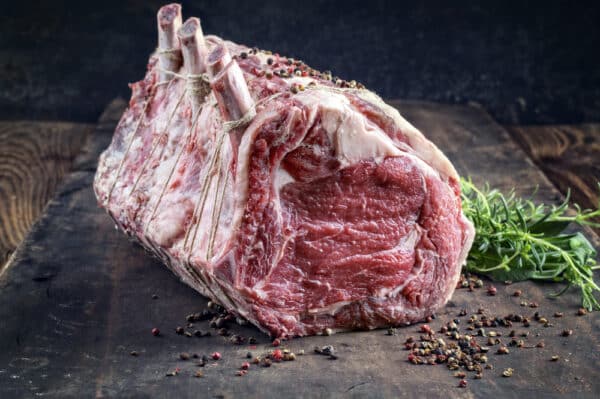
Some folks like to cover their roast in cheesecloth instead of leaving it open. This works, but make sure to replace the cheesecloth every day or two.
The length of time you decide to dry-age your prime rib is totally up to you. It could range anywhere from a week to two months or more! As it ages, your meat will get darker, drier, and smellier.
At first, your meat won’t seem much different in terms of texture or taste. Over the course of 4 weeks, it should start becoming more tender, but you won’t really notice a difference in flavor yet.
The next two weeks will give this beef cut a really distinct taste and a really strong smell, and it will be really juicy too.
That’s usually the best time to eat it. But if you wait another two weeks, the flavor and smell will get really intense, and only certain people will like it.
For How Long Can Cooked Prime Rib be Kept in the Fridge?
Cooked meat can be kept fresh in the refrigerator for up to four days by storing it in an airtight container or wrapping it tightly with plastic wrap at a temperature below 40°F.
Storing leftovers in the marinade in the fridge for a few days can give you an even more perfect prime rib.
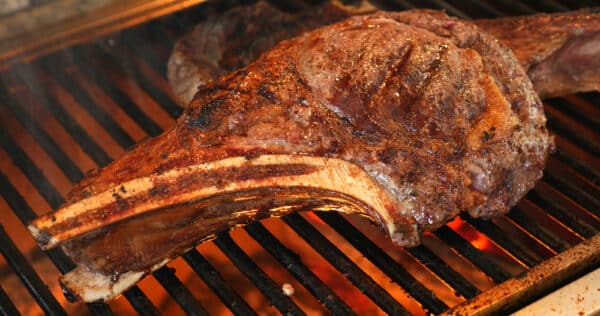
For long-term storage, it must be frozen at 0°F or lower and will typically remain safe to consume for up to three months.
To enjoy, thaw the frozen prime rib overnight in the refrigerator before reheating.
Related Reading >> How to grill Frozen Burgers
How to Tell if a Prime Rib Has Gone Bad?
To determine if the prime rib has gone bad, look at the color and smell of the meat; it should be a bright red and have no scent.
If it appears grayish-brown instead of the tell-tall fresh red color or has a sour smell, it’s best to throw it out.
Additionally, always label meat not immediately used with a date marker, so you can make sure that the expiration date has not passed.
If there is any doubt, discard the meat to protect your family.
Frequently Asked Questions
Q: How long can I keep cooked prime rib in the fridge?
A: You can store cooked beef in the fridge for 3 to 5 days.
Q: How should I store prime rib in the fridge?
A: Wrap the meat tightly in plastic wrap or aluminum foil and store it in the fridge.
Q: How do I keep prime rib warm?
B: Keep prime rib warm by wrapping it in tinfoil or storing it in a warm oven roughly 170-200 degrees.
Q: Can I freeze prime rib?
A: Yes, frozen prime rib lasts for up to 6 months. Make sure to wrap it tightly in plastic wrap and then aluminum foil to prevent freezer burn.
Q: How do I thaw frozen prime rib?
A: The best way to defrost frozen prime rib is to transfer it from the freezer to the fridge and let it thaw overnight. If you need to thaw it more quickly, you can put it in a sealed plastic bag and place it in a bowl of cold water. Change the water every 30 minutes until it is thawed, and cook it immediately once it is thawed.
Q: Can I eat leftover prime rib that has been in the fridge for more than 4 days?
A: It is not recommended to eat leftover meat that has been in the fridge for more than 4 days. It’s better to be cautious and throw it away.
Q: How can I tell if my prime rib has gone bad?
A: If your prime rib has a sour smell or slimy texture, it has gone bad and should be thrown away. Additionally, if there are any visible signs of mold or discoloration, it should not be eaten.
Learn More About Grilling
If you want to learn more about grilling, check out these other helpful resources!

Kevin Turner
Hi there, I'm Kevin Turner, Founder and CEO of thegrillingmaster.com. I started this website to share my passion and knowledge with you. You can leverage my years of experience as a pit master and professional to grill great food!
About The Grilling Master
Hi there, I'm Kevin Turner, Founder and CEO of thegrillingmaster.com.
My passion has always been grilling, smoking and BBQ delicious meats that satisfy my inner carnivore!
I started this website to share my passion and knowledge with you, the hungry reader who wants to prepare the perfect meal.
You can leverage my years of experience as a pit master and professional.
Send me a message and let's connect on Twitter here.



